Chalk About Champagne: With a Balance Between Fruit, Finesse and Structure, The Sparkling Chardonnays of Côte des Blancs Are Some of The Most Compelling White Wines Made Today.
“I am tasting stars!”
Dom Perignon’s famous quote, reported to have been uttered upon his first taste of Champagne, is likely apocryphal, but the trio of stars that align in a cold, northerly slice of France that sits on the ‘Seuil de Bourgogne’—the threshold of Burgundy—is not. It is the very-real combination of site-selected soil, grape variety and climate that makes Champagne unique in the world, and so it has been heralded ever since that moment in the cellars of the Benedictine Abbey at Hautvillers, whatever it was that the old monk said.
The soil is the result of eons of erosion, which has left low scarps and slopes that dip toward the center of the Paris Basin; the varying nature of the clay, limestone and chalk gives rise to the characteristics of Champagne’s sub-regions and create unique cradles for each of the main grape varieties, Chardonnay, Pinot Noir and Meunier. That said, these grapes are like canaries in the mine of wine production, and highly susceptible to the most minute changes in the atmosphere. The recent past has seen both growers and producers alter their outlook on Champagne making and it is a safe bet that more of the same is in the cards for the future.
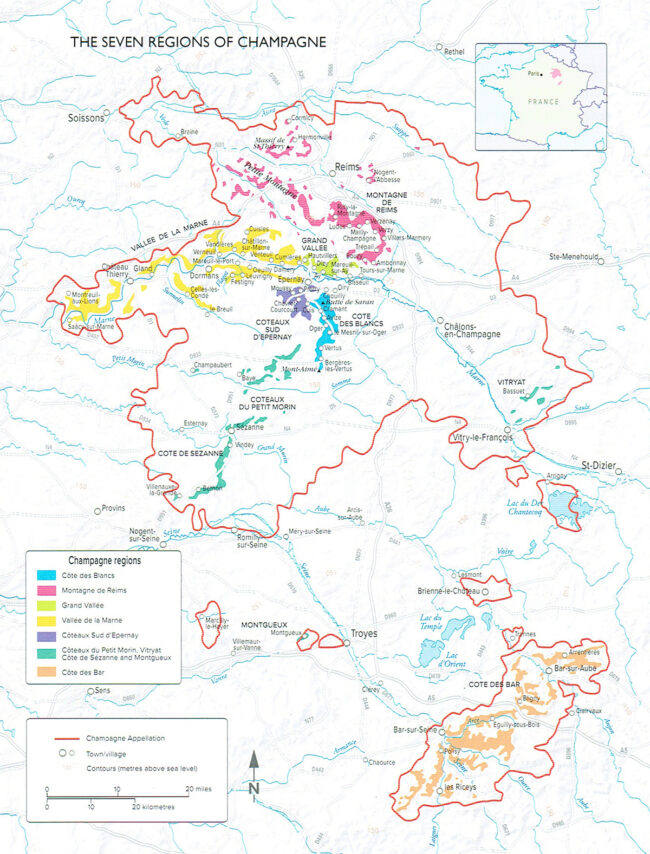
Champagne’s Distinct Sub-regions
Although a single AOP covers all sparkling wine produced in Champagne, there are several distinct sub-regions, each of which was originally associated with a single grape variety. Of course, geography changes throughout the area, so pockets of Champagne’s three main grape varieties (Pinot Noir, Meunier and Chardonnay) can be found in each district.
Ninety-three miles east of Paris, Champagne’s production zone spreads across 319 villages and encompasses roughly 85,000 acres. 17 of those villages have a legal entitlement to Grand Cru ranking, while 42 may label their bottles ‘Premier Cru.’ Four main growing areas (Montagne de Reims, Vallée de la Marne, the Côte des Blancs and the Côte des Bar) encompass nearly 280,000 individual plots of vines, each measuring a little over one thousand square feet.
The lauded wine writer Peter Liem expands the number of sub-regions from four to seven, dividing the Vallée de la Marne into the Grand Vallée and the Vallée de la Marne; adding the Coteaux Sud d’Épernay and combining the disparate zones between the heart of Champagne and Côte de Bar into a single sub-zone. (For details see Notebook, at the bottom of newsletter.)
Single-Vineyard Champagne: The Return To Prominence Of Vineyard and Viticulture
Whereas the ‘art’ of Champagne is often discussed in terms of expert blending—much as color is added in layers to create a portrait—a Cellar Master uses a pallet of flavors to create synergy, a whole that is greater than the sum of its parts. Traditionally, ‘house styles’ have been established over decades (even centuries) and homogeneity—in the best sense of the word—is the goal.
Even vintage Champagne (assembled from a single harvest, though many villages may contribute) should highlight the house approach, since loyal customers expect as much.
So why are site-specific bottlings Champagnes growing popularity? In part because of the rising renown of grower/producers, who are highlighting individual plots of terroir that they themselves have developed. It is trendy (and completely correct) to regard Champagne as wine first and foremost, and as such, individual vineyard expression rather than cookie-cutter (however delicious) house style is simply a new way to view this old standby appellation.
Above all, a single vineyard creates a unique fingerprint of the land beneath the vine, and to a terroir purist, there is no reality more compelling.
The Côte des Blancs
Uninhibitedly Chalky, Chardonnay Thrives Here.
Soil chemistry may be nuanced—acidity combined with alkalinity, macronutrient and micronutrient availability, et al., but its effects on grape growing is profound. The Côte des Blancs sits upon an exceptionally pure chalk bedrock, which combined with mostly east-facing slopes, creates an ideal environment for growing Chardonnay. The resulting wines are unparalleled in poise and finesse.
Even with this overview, the individual villages that pepper the 8000 acres of Côte des Blancs vineyards each bring their own unique gift to the Champagne party. As a result, it is fairly easy to differentiate styles and subtleties between the communes, and broadly, between those of the north and south. Wines from the northern Côte des Blancs villages, with more clay in the chalk, produce richer wines with recognizable weight while those of the south, with lighter topsoils, are piercing, fine-grained wines with a characteristic minerality that is often described as ‘salinity.’

The Grand Cru Villages Of The South: Oger and Le Mesnil-sur-Oger
Oger and its sister commune Le Mesnil-sur-Oger are among the 17 villages that were scored 100% on the now defunct échelles des crus scale, and both have kept their Grand Cru status after the scale was abolished in 2010. Both were promoted from Premier Cru to Grand Cru in 1985 and possess an austerity and potential that very few sites in the entire region possess.
Oger occupies slightly under a thousand vineyard acres on the ‘true’ Côte des Blancs slope south-southeast of Épernay; Le Mesnil-sur-Oger is sightly larger, and both produce exclusively Chardonnay. These wines are renowned for their firm, mineral-driven style which also manages to be elegant and balanced. The differences between the two Grand Crus may be a subject of discussion among fans, but the fact is that most of the variations are the result of producer and vintage as well as the location of the specific vineyard, whether in the slope above and around the villages or below them, on flatter land.
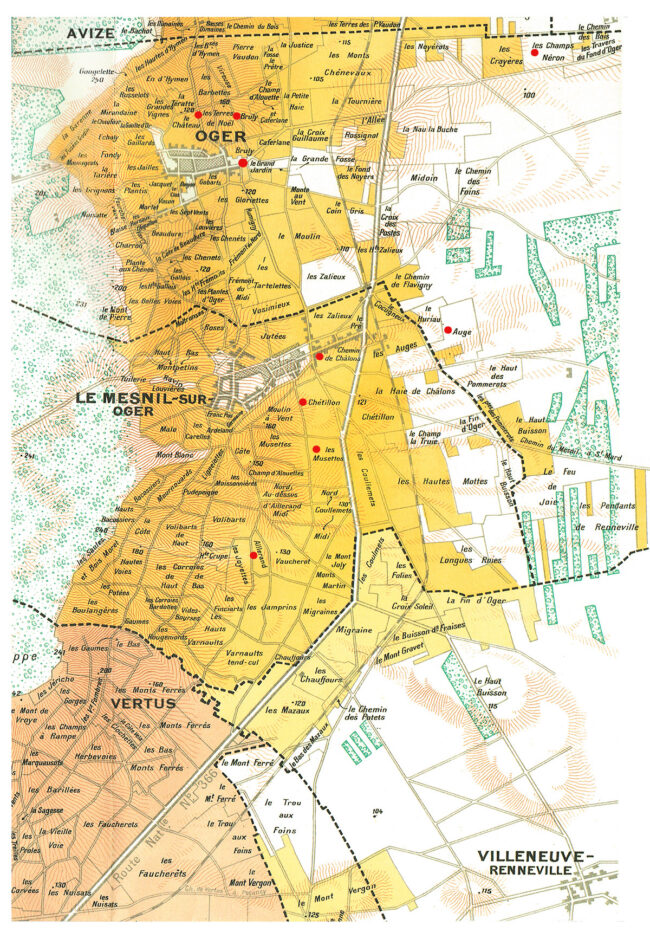
Champagne Domaine Vincey
Until 2014, the Vincey family grew their grapes and delivered them to the local cooperative after harvest, a practice that was the rule rather than the exception in Champagne until fairly recently.
In 2010, Quentin Vincey took over the family’s seventeen acres, and that long-standing tradition fell by the chalky waste side. Today, though he still sells some grapes to small organic houses, he and his wife Marine keep the bulk for themselves. Having converted the property to organic viticulture, the couple claims inspiration from the earth-friendly techniques that have taken much of France by storm, including spraying with essential oils and plant extracts.
“We made our first house-bottled Champagnes in 2014; that year we produced only 4000 bottles, but every year the quantity has increased a little bit,” says Quentin. Marine adds, “We maintain open minds, and learn a lot from tasting wines blind with friends, including wines from other regions.”

Quentin Vincey, Marine Vincey with Martin (cat) and Luna (dog)
Photo: Carine Charlier/Clic & Plumes
Among the best-practices which they now employ is base-wine fermenting in small oak barrels, about eight years old on average, so that the oak does not impart much flavor but is invaluable for allowing micro-oxygenation. “Our Chardonnay, with its high acidity, needs oxygen which it gets through the oak,” says Marine. “We also temper the acidity by picking at a higher sugar level than many other local producers. So, there is never a need to chaptalize.”
The different vineyard plots are kept separate in the barrels during the lees-aging. “We ferment only on natural yeast,” says Quentin. “This is rare in Champagne, where most producers use controlled cultured yeast. We think it offers a smoother taste, although it takes more time to ferment; two months is not unusual.”
Between January and March, the year after the harvest, the couple blind tastes all the barrels. and bottle at the beginning of September, before the new harvest. After a year in barrels, they don’t need to do any filtration, and this further adds complexity. Marine says, “The bottles will stay five years in the cellar before disgorging which is two years longer than the minimum for a vintage Champagne.”
 Champagne Domaine Vincey, 2018 Côte-des-Blancs Grand Cru Oger Brut-Nature ($89)
Champagne Domaine Vincey, 2018 Côte-des-Blancs Grand Cru Oger Brut-Nature ($89)
100% Grand Cru Chardonnay harvested from selected old vines; vinification and fermentation in fût de chêne without malolactic, clarification, filtration and matured on lees for three years. Zero dosage, disgorged January 2022. 4845 bottles produced.
 Champagne Domaine Vincey, 2018 Côte-des-Blancs Grand Cru Oger Brut-Nature ($189) 1.5 Liter
Champagne Domaine Vincey, 2018 Côte-des-Blancs Grand Cru Oger Brut-Nature ($189) 1.5 Liter
Same as above in magnum; only 200 magnums produced.
 Champagne Domaine Vincey, 2018 Côte-des-Blancs Grand Cru Oger ‘Le Grand Jardin’ Brut-Nature ($117)
Champagne Domaine Vincey, 2018 Côte-des-Blancs Grand Cru Oger ‘Le Grand Jardin’ Brut-Nature ($117)
The third release of Vincey’s first lieu-dit wine; the grapes come from a small plot directly behind the Maison, where ideal warmth gives the Chardonnay a characteristic profile of tropical fruit with some candied elements and salt.
 Champagne Domaine Vincey, 2015 Côte-des-Blancs Grand Cru Oger ‘Le Grand Jardin’ Brut-Nature ($117)
Champagne Domaine Vincey, 2015 Côte-des-Blancs Grand Cru Oger ‘Le Grand Jardin’ Brut-Nature ($117)
100% vintage 2015 Chardonnay from an old lieu-dit planted in 1967 with vinification and fermentation in fût de chêne without malolactic, clarification, filtration and matured on lees for three years. Zero dosage, disgorged December 2021. 2024 bottles produced.
 Champagne Domaine Vincey, 2018 Côte-des-Blancs Grand Cru Le Mesnil-sur-Oger ‘Auge’ Brut-Nature ($117)
Champagne Domaine Vincey, 2018 Côte-des-Blancs Grand Cru Le Mesnil-sur-Oger ‘Auge’ Brut-Nature ($117)
Auge is a tiny lieu-dit, less than three-quarters of an acre, planted in 1971. 100% 2018 Chardonnay with vinification and fermentation done in fût de chêne without malolactic, clarification, filtration and matured on lees for three years. Zero dosage, disgorged October 2022. 1375 bottles.
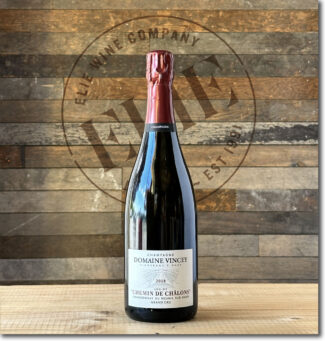 Champagne Domaine Vincey, 2018 Côte-des-Blancs Grand Cru Le Mesnil-sur-Oger ‘Chemin de Châlons’ Brut-Nature ($117)
Champagne Domaine Vincey, 2018 Côte-des-Blancs Grand Cru Le Mesnil-sur-Oger ‘Chemin de Châlons’ Brut-Nature ($117)
From a half-acre lieu-dit, fermented on indigenous yeasts and aged for 12 months in oak barrel; bottled without filtration or fining. Zero dosage; disgorged July 2023.
 Domaine Vincey ‘Vieilles Vignes – Oger & Mesnil-sur-Oger’, 2019 Coteaux-Champenois Grand Cru Blanc ($108)
Domaine Vincey ‘Vieilles Vignes – Oger & Mesnil-sur-Oger’, 2019 Coteaux-Champenois Grand Cru Blanc ($108)
50% Oger Grand Cru, 50% Le Mesnil-sur-Oger Grand Cru old vines; a still wine vinified and aged for 27 months in oak barrels before bottling in December 2021. Only 860 bottles made.
Champagne Pertois-Moriset
When young couples marry, their first order of business is often creating a family. In the case of Yves Pertois and Janine Moriset, who wed in 1951, it was to build a winery. Having both been raised in the business, they set up shop in Mesnil-Sur-Oger and drew fruit from fifty acres of prestigious vineyards split between Côte-des-Blancs and Côte de Sézanne
Today the estate is run by their granddaughter Cécile, who, with her husband Vincent Bauchet, has worked diligently to improve all aspects of the inheritance, technically and ecologically. “The estate works while remaining attentive to the biodiversity that surrounds it,” Cécile maintains. “If the years allow it, no chemical inputs are applied on the vine; the vines are naturally grassed in winter, and in summer the soil is ploughed. All mechanical work is carried out with a 100% electric tractor.”

Vincent Bauchet, Champagne Pertois-Moriset
Vincent adds, “Respecting House legacy, we created a pressing center in 2009. It is equipped with two stainless-steel membrane presses, two thermo-regulated stainless-steel tanks, and a vat room for barrels and big oaks. These facilities contribute to a healthy pressing, a fermentation at controlled linear temperature, a malolactic fermentation deliberately blocked on most of the cuvées, and an aging on fine lees throughout the winter. Our wine is bottled in June/July in order to give the wine time to fully develop in tanks and barrels. The bottles then rest in the cellar, at least 20 months for the main vintages, and much longer other vintages, thus guaranteeing that our wines reflect the unique flavors of their terroir.”
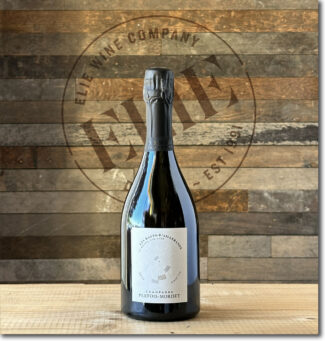 Champagne Pertois-Moriset, 2015 Côte-des-Blancs Grand Cru Le Mesnil-sur-Oger ‘Les Hauts-d’Aillerands’ Extra-Brut ($104)
Champagne Pertois-Moriset, 2015 Côte-des-Blancs Grand Cru Le Mesnil-sur-Oger ‘Les Hauts-d’Aillerands’ Extra-Brut ($104)
From two plots of Chardonnay within the lieu-dit Les Hauts-d’Aillerands planted in 1997 and 2010 with southerly exposures. Half the wine was fermented in steel tanks, the rest in oak; fermentation lasted seven months followed by 72 months on lees with a final dosage of 2.5 grams/liter.
 Champagne Pertois-Moriset ‘Spécial Club’, 2016 Côte-des-Blancs Grand Cru Le Mesnil-sur-Oger Extra-Brut ($104)
Champagne Pertois-Moriset ‘Spécial Club’, 2016 Côte-des-Blancs Grand Cru Le Mesnil-sur-Oger Extra-Brut ($104)
Pertois-Moriset made this wine to celebrate their return to the Club Trésors de Champagne, a prestigious group of artisan winemakers; it is a blend of their most respected lieux-dits. Vinified 12% in barrels and 88% in stainless steel tanks; 60 months in cellar, and dosed at 2 grams/liter. Production was 6539 bottles, 405 magnums and 50 jeroboams.
 Champagne Pertois-Moriset ‘Spécial Club”, 2016 Côte-des-Blancs Grand Cru Le Mesnil-sur-Oger Extra-Brut ($299) 1.5 Liter
Champagne Pertois-Moriset ‘Spécial Club”, 2016 Côte-des-Blancs Grand Cru Le Mesnil-sur-Oger Extra-Brut ($299) 1.5 Liter
See above; the wine is in magnum.
 Champagne Pertois-Moriset ‘Les Quatre Terroirs’, Côte-des-Blancs Grand Cru Extra-Brut ($66)
Champagne Pertois-Moriset ‘Les Quatre Terroirs’, Côte-des-Blancs Grand Cru Extra-Brut ($66)
100% Grand Cru Chardonnay; the label’s four terroirs are in Le Mesnil-sur-Oger, Oger, Cramant and Chouilly. The wine is 70% vintage, 30% perpetual reserve, vinified in both tank and barrel without malo. The wine spends 36 months on the lees and is dosed at 3 grams/liter.
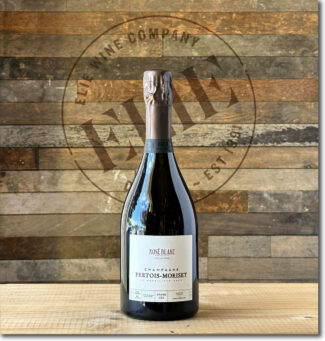 Champagne Pertois-Moriset ‘Rosé Blanc Collection’, Grand Cru Extra-Brut ($72)
Champagne Pertois-Moriset ‘Rosé Blanc Collection’, Grand Cru Extra-Brut ($72)
92% Chardonnay Grand Cru and 8% Bouzy Rouge Grand Cru Pinot Noir. The wine is 70% vintage, 30% perpetual reserve, vinified in both tank and barrel without malo. The wine spends 30 months on the lees and is dosed at 3 grams/liter.
The Côte de Sézanne: Côte des Blancs Continuum?
The 1500 acre Côte de Sézanne sits a few miles southeast of Étoge in the Côte des Blancs. Chardonnay accounts for around 75% of the vineyard plantings, but there is a significant amount of Meunier and Pinot Noir grown here. Sézanne wines are known for being among the fruit-forward in the region, but critics point out that this is often a trade-off for finesse.
The terroir of the region differs slightly from the Côte des Blancs; unlike the predominantly chalky soils further north, the soils here are mostly clay and a mixture of clay and chalk. Due to the specifics of the terroir, grapes tend to ripen a little earlier than other regions.
 Champagne Pertois-Moriset, 2018 Coteaux-Sézannais ‘Barbonne-Fayel’ Brut ($99)
Champagne Pertois-Moriset, 2018 Coteaux-Sézannais ‘Barbonne-Fayel’ Brut ($99)
This mono-village Vintage Champagne from Barbonne-Fayel in the Côte de Sézanne, a village made famous in Ulysse Collin’s ‘Les Maillons.’ 100% Pinot Noir vinified 80% in stainless steel and 20% in foudre with malolactic blocked. The wine spends three years in bottle on lees and is dosed at 3 grams/liter.
 Champagne Pertois-Moriset ‘L’Assemblage’, Coteaux-Sézannais Brut ($263) 3 Liter
Champagne Pertois-Moriset ‘L’Assemblage’, Coteaux-Sézannais Brut ($263) 3 Liter
50% Pinot Noir and 50% Chardonnay from the slopes of the Marne in the Côte de Sézanne, vinified in stainless steel and blended with 30% reserve wine from oak barrels. The wine is aged for a minimum of 15 months and dosed at 1 gram/liter.
Champagne J.L. Vergnon
In this small 12-acre estate in the heart of the Grand Cru village of Le Mesnil-sur-Oger, Didier Vergnon and his son Clément have worked tirelessly toward organic farming, harvesting only balanced and ripe grapes. They have eliminated both chaptalization and malolactic fermentation, and prefer a low or zero dosage. The brilliant winemaker Christophe Constant has been at their side, both as cellar master and now, as consultant.

Didier Vergnon (standing) with Christophe Constant
Of the property, Didier says, “Our domain extends over several terroirs, the majority in Le Mesnil sur Oger, classified Grand Cru, Blanc de Blancs. We also draw from vineyards in Oger and Avize, and also vines in surrounding Premier Cru villages Vertus and Villeneuve.”
 Champagne J.L. Vergnon ‘Murmure’, Côte-des-Blancs Premier Cru Blanc-de-Blancs Brut-Nature ($63)
Champagne J.L. Vergnon ‘Murmure’, Côte-des-Blancs Premier Cru Blanc-de-Blancs Brut-Nature ($63)
100% Chardonnay, half from Vertus Premier Cru, half from Villeneuve Premier Cru, from 30-year-old vines. Fermented and aged in 50% stainless steel, 50% older 400-liter barrels and bottled with zero dosage. Disgorged June 2019.
 Champagne J.L. Vergnon ‘MSNL’, 2010 Côte-des-Blancs Grand Cru Le Mesnil-sur-Oger Blanc-de-Blancs Extra-Brut ($130)
Champagne J.L. Vergnon ‘MSNL’, 2010 Côte-des-Blancs Grand Cru Le Mesnil-sur-Oger Blanc-de-Blancs Extra-Brut ($130)
100% Chardonnay from east-facing Les Chétillons and Mussettes vineyard in Le Mesnil-sur-Oger, formerly released under the ‘Resonance’ label. Vinified and aged in steel tanks, aged seven years in the cellar and dosed at 3 grams/liter. Disgorged June 2018. 3222 bottles produced.
 Champagne J.L. Vergnon ‘Rosémotion’, Grand Cru Rosé Extra-Brut ($89)
Champagne J.L. Vergnon ‘Rosémotion’, Grand Cru Rosé Extra-Brut ($89)
A scant 2000 bottles of this Grand Cru rosé were produced; 90% Chardonnay from Mesnil s/ Oger, Oger and Avize and 10% Pinot Noir from Mailly Grand Cru. 20% of reserve wine was aged 3 months in oak barrels and 80% of single-year in steel tank. The wine is a delicate Creamsicle color and shows currants and pomelos on the nose, with notes of strawberries, saffron and biscuits reflecting the long aging on lees. Disgorged June 2019.
The Northern Villages Of The Côte des Blancs
Of the notable Cru-level villages in the northern sector of the Côte des Blancs, Cramant covers 870 acres, of which 99.9% are planted to Chardonnay. As the name suggests, Cramant Champagnes are often considered ‘creamier’ than those of nearby Avize, where there is a higher proportion of east-facing slopes. These wines are also more concentrated than those of Cuis, where there is a higher proportion of north-facing slopes and with a more dominating minerality than those in Chouilly.
Chouilly, immediately to the east of Épernay and just south of Marne, is larger at 1300 acres, with slightly more Pinot Noir planted. Champagnes from Chouilly are usually said to be of a rather “rich” style with buttery notes or aromas of tropical fruit, and with less intense mineral character than the Grand Cru neighbors to the south.
The Premier Cru vineyards of Cuis are primarily located around the northern part of the small forested area above the Côte des Blancs slope, with some vineyards just north of the village, partly on flatter ground and partly close to the small forested area between Cramant and Chouilly. Cuis wines tend to be lighter Blanc de Blancs, not in the least due to the more-or-less north-facing slopes. The level of acidity tends to be quite high, where the minerality comes to the fore even more than usual and explains why it is less common to find oaked Cuis-only Champagnes compared to oaked versions from Grand Cru villages.
Champagne Guy Larmandier
The late Guy Larmandier established his 22 acre estate in the heart of Vertus at the southern base of the Côte des Blancs; all the vineyard plots are distributed among the Grand Cru villages of Chouilly and Cramant and the Premier Cru villages of Vertus and Cuis.

Marie-Helene and François Larmandier
Following his death, the House has been managed by his wife, Colette, and their two children, François and Marie-Helene. With an annual production of 90,000 bottles, harvest is conducted manually and the wines are aged a minimum of 36 months on the lees, disgorged on order and receive a minimal dosage so as to emphasize the purity and finesse of the terroir.
 Champagne Guy Larmandier, Côte-des-Blancs Premier Cru Vertus Brut Zéro ($51)
Champagne Guy Larmandier, Côte-des-Blancs Premier Cru Vertus Brut Zéro ($51)
90% Chardonnay and 10% Pinot Noir, aged for 3 years on the lees before disgorgement. The Premier Cru vineyard of Vertus is famous for its Pinot Noir, and it brings to the wine an earthy, red fruit richness. Disgorged July 2019.
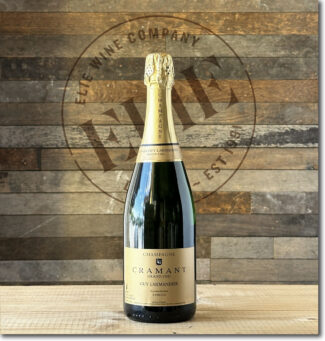 Champagne Guy Larmandier, Côte-des-Blancs Grand Cru Cramant Blanc-de-Blancs Brut Zéro ($65)
Champagne Guy Larmandier, Côte-des-Blancs Grand Cru Cramant Blanc-de-Blancs Brut Zéro ($65)
From Larmandier’s 8-acre Grand Cru vineyard in Cramant, an epicenter of Chardonnay in Champagne. After the first fermentation, the wine was bottled and aged sur latte for five years before disgorgement; the nose offers fleshy fruit as well as subtle hints of calcareous minerality. Disgorged October 2021.
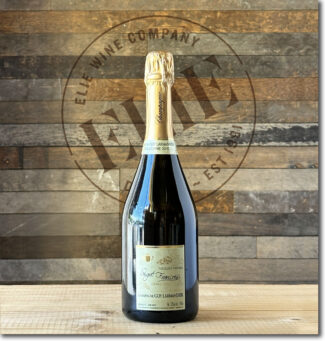 Champagne Guy Larmandier ‘Signé François – Vieilles Vignes ‘, 2010 Côte-des-Blancs Grand Crus Cramant & Chouilly Blanc-de-Blancs Brut Zéro ($99)
Champagne Guy Larmandier ‘Signé François – Vieilles Vignes ‘, 2010 Côte-des-Blancs Grand Crus Cramant & Chouilly Blanc-de-Blancs Brut Zéro ($99)
Larmandier’s prestige cuvée is produced from their oldest parcels of Chardonnay in the Grand Cru village of Cramant blended with a small amount of fruit from a holding in Chouilly. It spends five years on the lees before disgorgement. The wine’s chalky core shows itself in a clinging, almost salty finish. Disgorged January 2022.
Champagne Pierre Gimonnet
In Champagne, particularly in 2024, you can’t underestimate the value of legacy and old vines. Pierre Gimonnet began bottling estate Champagnes in 1935 with impressive Premier and Grand Cru terroirs from which to mine. In addition to the 33 acres in Cuis, he owned 27 acres of Chardonnay vines in the Grand Cru villages of Cramant and Chouilly, plus another two acres Oger and five in Premier Cru Vertus. Today, his grandson Didier has added Gimonnet also owns an acre or so of Pinot Noir, split between the Grand Cru of Aÿ and Premier Cru of Mareuil-sur-Aÿ.

Famille Pierre Gimonnet
In a region where there is a plethora of younger vines, these legacy vineyards are a key to the kingdom. Says Didier, “70% of our holdings are over 30 years old, of which some 40% are over 40 years old, with 100+ year old vines in the lieux-dits of Le Fond du Bateau, planted in 1911, and Buisson, planted in 1913, both in the Grand Cru village of Cramant.”
Underscoring this, he adds, “Our Spécial Club, for example, is based on Cramant Grand Cru, and includes pi 100+ year old vines in the lieux-dits of Le Fond du Bateau, and Buissons. The Cramant is very expressive and round; the Chouilly is similar in style but slightly less concentrated; Cuis is much more neutral, acid, fresh, aerial: This north-facing village is the coolest in the Côte des Blancs.”
 Champagne Pierre Gimonnet, Premier Cru Cuis Blanc-de-Blancs Brut ($63)
Champagne Pierre Gimonnet, Premier Cru Cuis Blanc-de-Blancs Brut ($63)
From north-facing vineyards, 2017 fruit is enriched with 27% reserve wine from the 2010 to 2014 vintages. Élevage in stainless steel, sur latte for two years with disgorgement May 2018 and 6 grams/liter dosage. 130,000 bottles made.
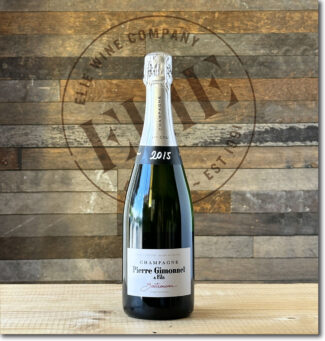 Champagne Pierre Gimonnet ‘Gastronome’, 2015 Premier Cru Blanc-de-Blancs Brut ($72)
Champagne Pierre Gimonnet ‘Gastronome’, 2015 Premier Cru Blanc-de-Blancs Brut ($72)
As the name suggests, ‘Gastronome’ is designed to be food friendly by being produced under lower pressure, around 4.5 ‘atmospheres’ as opposed to Champagne’s usual 5-6. 51% Chouilly Grand Cru (Montaigu), 18% Cramant Grand Gru (Buissons), 5% Oger Grand Cru (Terres de Noël, Brulis and Champs Nérons), 25% Cuis Premier Cru (Roualles and Croix-Blanche) and 1% Vertus Premier cru. Disgorged in October 2019 with 5 grams/l liter dosage.
 Champagne Pierre Gimonnet ‘Paradoxe’, 2013 Premier Cru Cuis Blanc-de-Blancs Brut ($75)
Champagne Pierre Gimonnet ‘Paradoxe’, 2013 Premier Cru Cuis Blanc-de-Blancs Brut ($75)
90% Pinot Noir from Aÿ Grand Cru and Mareuil-sur-Aÿ Premier Cru, 10% Chardonnay from Cuis Premier Cru with élevage in stainless steel; sur latte 71+ months with disgorgement April 2018. Dosed with 6 grams/liter.
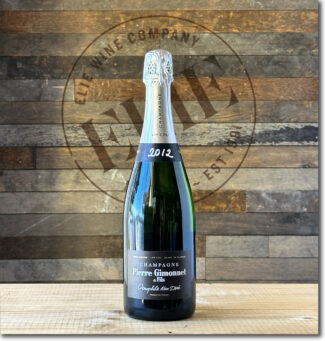 Champagne Pierre Gimonnet ‘Oenophile’, 2012 Côte-des-Blancs Premier Cru Blanc-de-Blancs Brut-Nature ($99)
Champagne Pierre Gimonnet ‘Oenophile’, 2012 Côte-des-Blancs Premier Cru Blanc-de-Blancs Brut-Nature ($99)
79% Cramant Grand Cru from 7 lieux-dits, Chouilly Grand Cru (Montaigu and Ronds Buissons), Oger Grand Cru (Terres de Noël and Champs Nérons), 21% Cuis Premier Cru (Croix-Blanche and Roualles) and Versus Premier Cru. Fermented for eight months in stainless, bottled April 2013, disgorged in October 2019 after six years on lees.
Notebook …
Drawing The Boundaries of The Champagne Region
To be Champagne is to be an aristocrat. Your origins may be humble and your feet may be in the dirt; your hands are scarred from pruning and your back aches from moving barrels. But your head is always in the stars.
As such, the struggle to preserve its identity has been at the heart of Champagne’s self-confidence. Although the Champagne controlled designation of origin (AOC) wasn’t recognized until 1936, defense of the designation by its producers goes back much further. Since the first bubble burst in the first glass of sparkling wine in Hautvillers Abbey, producers in Champagne have maintained that their terroirs are unique to the region and any other wine that bears the name is a pretender to their effervescent throne.
Having been defined and delimited by laws passed in 1927, the geography of Champagne is easily explained in a paragraph, but it takes a lifetime to understand it.
Ninety-three miles east of Paris, Champagne’s production zone spreads across 319 villages and encompasses roughly 85,000 acres. 17 of those villages have a legal entitlement to Grand Cru ranking, while 42 may label their bottles ‘Premier Cru.’ Four main growing areas (Montagne de Reims, Vallée de la Marne, the Côte des Blancs and the Côte des Bar) encompass nearly 280,000 individual plots of vines, each measuring a little over one thousand square feet.
The lauded wine writer Peter Liem expands the number of sub-regions from four to seven, dividing the Vallée de la Marne into the Grand Vallée and the Vallée de la Marne; adding the Coteaux Sud d’Épernay and combining the disparate zones between the heart of Champagne and Côte de Bar into a single sub-zone.
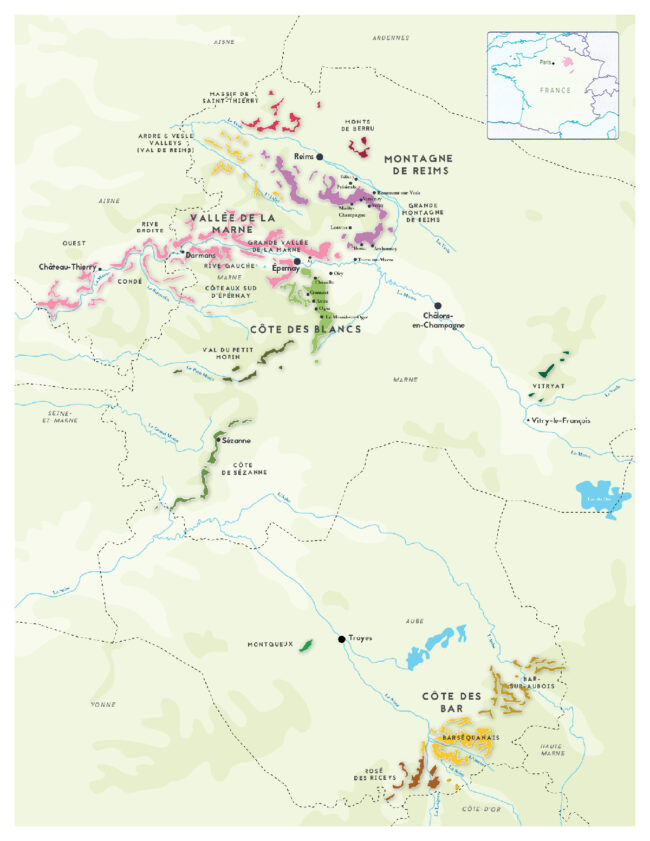
Courtesy of Wine Scholar Guild
Lying beyond even Liem’s overview is a permutation of particulars; there are nearly as many micro-terroirs in Champagne as there are vineyard plots. Climate, subsoil and elevation are immutable; the talent, philosophies and techniques of the growers and producers are not. Ideally, every plot is worked according to its individual profile to establish a stamp of origin, creating unique wines that compliment or contrast when final cuvées are created.
Champagne is predominantly made up of relatively flat countryside where cereal grain is the agricultural mainstay. Gently undulating hills are higher and more pronounced in the north, near the Ardennes, and in the south, an area known as the Plateau de Langres, and the most renowned vineyards lie on the chalky hills to the southwest of Reims and around the town of Épernay. Moderately steep terrain creates ideal vineyard sites by combining the superb drainage characteristic of chalky soils with excellent sun exposure, especially on south and east facing slopes.
… Yet another reason why this tiny slice of northern France, a mere 132 square miles, remains both elite and precious.
- - -
Posted on 2024.05.13 in Crémant du Bourgogne, France, Champagne, Wine-Aid Packages
Featured Wines
- Notebook: A’Boudt Town
- Saturday Sips Wines
- Saturday Sips Review Club
- The Champagne Society
- Wine-Aid Packages
Wine Regions
Grape Varieties
Albarino, Albarín Blanco, Albarín Tinto, Albillo, Aleatico, Aligote, Arbanne, Aubun, Barbarossa, barbera, Biancu Gentile, bourboulenc, Cabernet Franc, Caino, Caladoc, Calvi, Carcajolu-Neru, Carignan, Chablis, Chardonnay, Chasselas, Cinsault, Clairette, Corvina, Counoise, Dolcetto, Erbamat, Ferrol, Frappato, Friulano, Fromenteau, Gamay, Garnacha, Garnacha Tintorera, Gewurztraminer, Graciano, Grenache, Grenache Blanc, Groppello, Juan Garcia, Lambrusco, Loureira, Macabeo, Macabou, Malbec, Malvasia, Malvasia Nera, Marcelan, Marsanne, Marselan, Marzemino, Mondeuse, Montanaccia, Montònega, Morescola, Morescono, Moscatell, Muscat, Natural, Niellucciu, Parellada, Patrimonio, Pedro Ximénez, Petit Meslier, Petit Verdot, Pineau d'Aunis, Pinot Blanc, Pinot Gris, Pinot Meunier, Pinot Noir, Pouilly Fuisse, Pouilly Loche, Poulsard, Prieto Picudo, Riesling, Rondinella, Rose, Rousanne, Roussanne, Sagrantino, Sauvignon Blanc, Savignin, Sciacarellu, Semillon, Souson, Sparkling, Sumoll, Sylvaner, Syrah, Tannat, Tempranillo, Trebbiano, Trebbiano Valtenesi, Treixadura, Trousseau, Ugni Blanc, vaccarèse, Verdicchio, Vermentino, Xarel-loWines & Events by Date
- July 2024
- June 2024
- May 2024
- April 2024
- March 2024
- February 2024
- January 2024
- December 2023
- November 2023
- October 2023
- September 2023
- August 2023
- July 2023
- June 2023
- May 2023
- April 2023
- March 2023
- February 2023
- January 2023
- December 2022
- November 2022
- October 2022
- September 2022
- August 2022
- July 2022
- June 2022
- May 2022
- April 2022
- March 2022
- February 2022
- January 2022
- December 2021
- November 2021
- October 2021
- September 2021
- August 2021
- July 2021
- June 2021
- May 2021
- April 2021
- March 2021
- February 2021
- January 2021
- December 2020
- November 2020
- October 2020
- September 2020
- August 2020
- July 2020
- June 2020
- May 2020
- April 2020
- March 2020
- February 2020
- January 2020
- December 2019
- November 2019
- October 2019
- September 2019
- August 2019
- July 2019
- June 2019
- May 2019
- April 2019
- March 2019
- February 2019
- January 2019
- December 2018
- November 2018
- October 2018
- September 2018
- August 2018
- July 2018
- June 2018
- May 2018
- April 2018
- March 2018
- February 2018
- January 2018
- December 2017
- November 2017
- October 2017
- September 2017
- August 2017
- July 2017
- June 2017
- May 2017
- April 2017
- March 2017
- February 2017
- January 2017
- December 2016
- November 2016
- October 2016
- September 2016
- August 2016
- July 2016
- June 2016
- May 2016
- April 2016
- March 2016
- February 2016
- January 2016
- December 2015
- November 2015
- October 2015
- September 2015
- August 2015
- July 2015
- June 2015
- May 2015
- April 2015
- March 2015
- February 2015
- January 2015
- December 2014
- November 2014
- October 2014
- September 2014
- August 2014
- July 2014
- June 2014
- April 2014
- March 2014
- February 2014
- January 2014
- December 2013
- November 2013
- October 2013
- September 2013
- August 2013
- July 2013
- June 2013
- May 2013
- April 2013
- March 2013
- February 2013
- January 2013
- December 2012
- November 2012
- October 2012
Search



